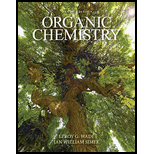
Concept explainers
(a)
To determine: If Chargaff’s rule implied that equal amounts of guanine and adenine are present in DNA.
Interpretation: Whether Chargaff’s rule implied that the equal amounts of guanine and adenine are present in DNA is to be stated.
Concept introduction: James and Watson in
According to Chargaff’s rule the DNA contains the equimolar amounts of guanine and cytosine and also equimolar amounts of adenine and thymine.
This means that
The pyrimidine bases are cytosine and thymine and purine bases are guanine and adenine that are present in DNA.
(b)
To determine: If Chargaff’s rule implied that the sum of purine residues equals the sum of pyrimidine residues.
Interpretation: Whether Chargaff’s rule implied that the sum of purine residues equals the sum of pyrimidine residues is to be stated.
Concept introduction: James and Watson in
According to Chargaff’s rule the DNA contains the equimolar amounts of guanine and cytosine and also equimolar amounts of adenine and thymine.
This means that
The pyrimidine bases are cytosine and thymine and purine bases are guanine and adenine that are present in DNA.
(c)
To determine: If Chargaff’s rule applied only to double-stranded DNA or it would also apply to individual strand if the double helical strand were separated into its two complementary strands.
Interpretation: Whether Chargaff’s rule applied only to double-stranded DNA or it would also apply to individual strand if the double helical strand were separated into its two complementary strands is to be stated.
Concept introduction: James and Watson in
According to Chargaff’s rule, the DNA contains the equimolar amounts of guanine and cytosine and also equimolar amounts of adenine and thymine.
This means that
The pyrimidine bases are cytosine and thymine and purine bases are guanine and adenine that are present in DNA.
Want to see the full answer?
Check out a sample textbook solution
Chapter 23 Solutions
Organic Chemistry Plus Mastering Chemistry with Pearson eText -- Access Card Package (9th Edition) (New in Organic Chemistry)
- Please answer the question for the reactions, thank youarrow_forwardWhat is the product of the following reaction? Please include a detailed explanation of what is happening in this question. Include a drawing showing how the reagent is reacting with the catalyst to produce the correct product. The correct answer is IV.arrow_forwardPlease complete the reactions, thank youarrow_forward
- Consider the synthesis. What is compound Y? Please explain what is happening in this question. Provide a detailed explanation and a drawing to show how the compound Y creates the product. The correct answer is D.arrow_forwardWhat would be the major product of the following reaction? Please include a detailed explanation of what is happening in this question. Include steps and a drawing to show this reaction proceeds and how the final product is formed. The correct answer is B. I put answer D and I don't really understand what is going on in the question.arrow_forwardWhat is the product of the following reaction? Please explain what is happening in this question. Provide a detailed explanation and a drawing showing how the reagent is reacting with the catalysts to product the correct product. The correct answer is B.arrow_forward
- What is the missing intermediate 1 and the final product 2. Please include a detailed explanation explaining the steps of malonic ester synthesis. Please include drawings of the intermediate and how it occurs and how the final product is former.arrow_forwardWhat would be the reagents and conditions above and below the arrow that will complete the proposed acetoacetic ester synthesis? If it cannot be done efficiently, then I will choose that answer. There could be 2 or 4 reagents involved. Please provide a detailed explanation and drawings showing how it would proceed with the correct reagents.arrow_forwardFor benzene, the ∆H° of vaporization is 30.72 kJ/mol and the ∆S° of vaporization is 86.97 J/mol・K. At 1.00 atm and 228.0 K, what is the ∆G° of vaporization for benzene, in kJ/mol?arrow_forward
- The reaction Q(g) + R(g) → Z(l) is shown to be exothermic. Which of the following is true concerning the reaction. it is spontaneous only at High T, it is spontaneous at low T it is nonspontaneous at all T it is spontanrous at all T. it is non spontaneous only at low T.arrow_forwardThe reaction Q(g) + R(g) → Z(l) is shown to be exothermic. Which of the following is true concerning the reactionarrow_forwardWhich of the following has the largest standard molar entropy, S° (298.15 K) He H2 NaCl KBr Hgarrow_forward
 ChemistryChemistryISBN:9781305957404Author:Steven S. Zumdahl, Susan A. Zumdahl, Donald J. DeCostePublisher:Cengage Learning
ChemistryChemistryISBN:9781305957404Author:Steven S. Zumdahl, Susan A. Zumdahl, Donald J. DeCostePublisher:Cengage Learning Chemistry: An Atoms First ApproachChemistryISBN:9781305079243Author:Steven S. Zumdahl, Susan A. ZumdahlPublisher:Cengage Learning
Chemistry: An Atoms First ApproachChemistryISBN:9781305079243Author:Steven S. Zumdahl, Susan A. ZumdahlPublisher:Cengage Learning
- Chemistry: Matter and ChangeChemistryISBN:9780078746376Author:Dinah Zike, Laurel Dingrando, Nicholas Hainen, Cheryl WistromPublisher:Glencoe/McGraw-Hill School Pub Co
 Chemistry: Principles and PracticeChemistryISBN:9780534420123Author:Daniel L. Reger, Scott R. Goode, David W. Ball, Edward MercerPublisher:Cengage Learning
Chemistry: Principles and PracticeChemistryISBN:9780534420123Author:Daniel L. Reger, Scott R. Goode, David W. Ball, Edward MercerPublisher:Cengage Learning Introductory Chemistry: An Active Learning Approa...ChemistryISBN:9781305079250Author:Mark S. Cracolice, Ed PetersPublisher:Cengage Learning
Introductory Chemistry: An Active Learning Approa...ChemistryISBN:9781305079250Author:Mark S. Cracolice, Ed PetersPublisher:Cengage Learning





